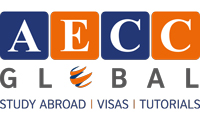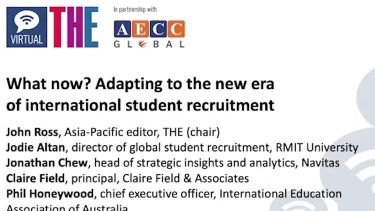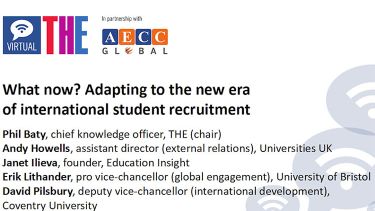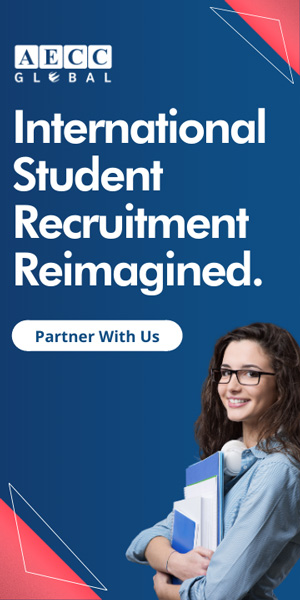US and Canadian universities – like institutions across the globe – faced huge disruption to international student recruitment during the pandemic. But there may be some shoots of hope
For many universities in the US and Canada, international student recruitment has relied on a few key markets, particularly China and India. When the pandemic hit in 2020, it forced institutions to think more widely about student mobility. During Times Higher Education’s recent webinar, in partnership with AECC Global, on adapting to a new era of digital student recruitment, a poll of viewers found that around 75 per cent had seen their biggest decline in students from China.
Roger Brindley, vice-provost for global programmes at Penn State University, said that overcoming this dependence on certain markets would be a challenge but also an opportunity. “We have a situation where we can do more online teaching and offer more modes of delivery,” he said. “In the past, we’ve had business models that rely on bringing the financial elite to study in our countries, so now we need to think about equity and access. Can we create online entries to grad programmes so someone only has to come to campus for 12 months, for example, or build relationships with partners around the world so we can be with our students in their cultural environment?”
Universities have pivoted quickly to provide online learning, leveraging technology to deliver high-quality courses to students despite ongoing disruption. Student experience remains front of mind in terms of a future return to campus. “International students are part of what makes the fabric of our universities global-facing,” said Joseph Wong, vice-president, international at the University of Toronto, which has seen an increase in applications from international students in a broader range of countries since the pandemic. “We need to see international student diversification as enlivening our campuses; [it is] the incredible diversity of opinions and lived experiences that animate our classrooms.”
One of the challenges lies in reassuring international students that they will be safe if and when they choose to come to campus. MJ Knoll-Finn, senior vice-president for enrolment management and student success at New York University, said that her team relied on a set of guiding principles to overcome uncertainty. “Health will be our number-one priority, for example offering vaccinations. Another guiding principle is flexibility, so we lay out timelines for what we can tell key audiences and when,” she explained.
New York University has a global network of 14 sites so if there is an issue with a visa or travel restrictions, the student can enrol in the local site until they are able to come to New York. Brindley added that enrolment teams have discussed the change in political administration in the US and how that might ease access to visas: “The simple answer, ‘is you are welcome, and you always were’,” he said.
Amy Bass Henry, executive director of the Office of International Education at Georgia Institute of Technology, said that it was crucial to consider international students as core members of the community, rather than “revenue generators or add-ons”. “If we do this, our actions will follow,” she said. “Some of this is about perspective, as people’s lives look different right now anyway and they understand it’s the same here [in the US].”
Georgia Tech has managed to keep about 8,000 students on campus through regular testing and mask wearing, she added. In future, Wong hopes the pandemic will lead to greater – rather than reduced – international collaboration. “We’re articulating the impact we have, whether that’s vaccine discovery, public policy, behavioural psychology,” he said. “The narrative that universities are elitist has fallen by the wayside because we’re accelerating students into positions of impact in the workforce. The more talent we can bring from around the world, the more talented workforce and leadership we have moving to the future.”
Find out more about AECC Global.
Watch the Times Higher Education and AECC Global webinar above or on the THE Connect YouTube channel.



